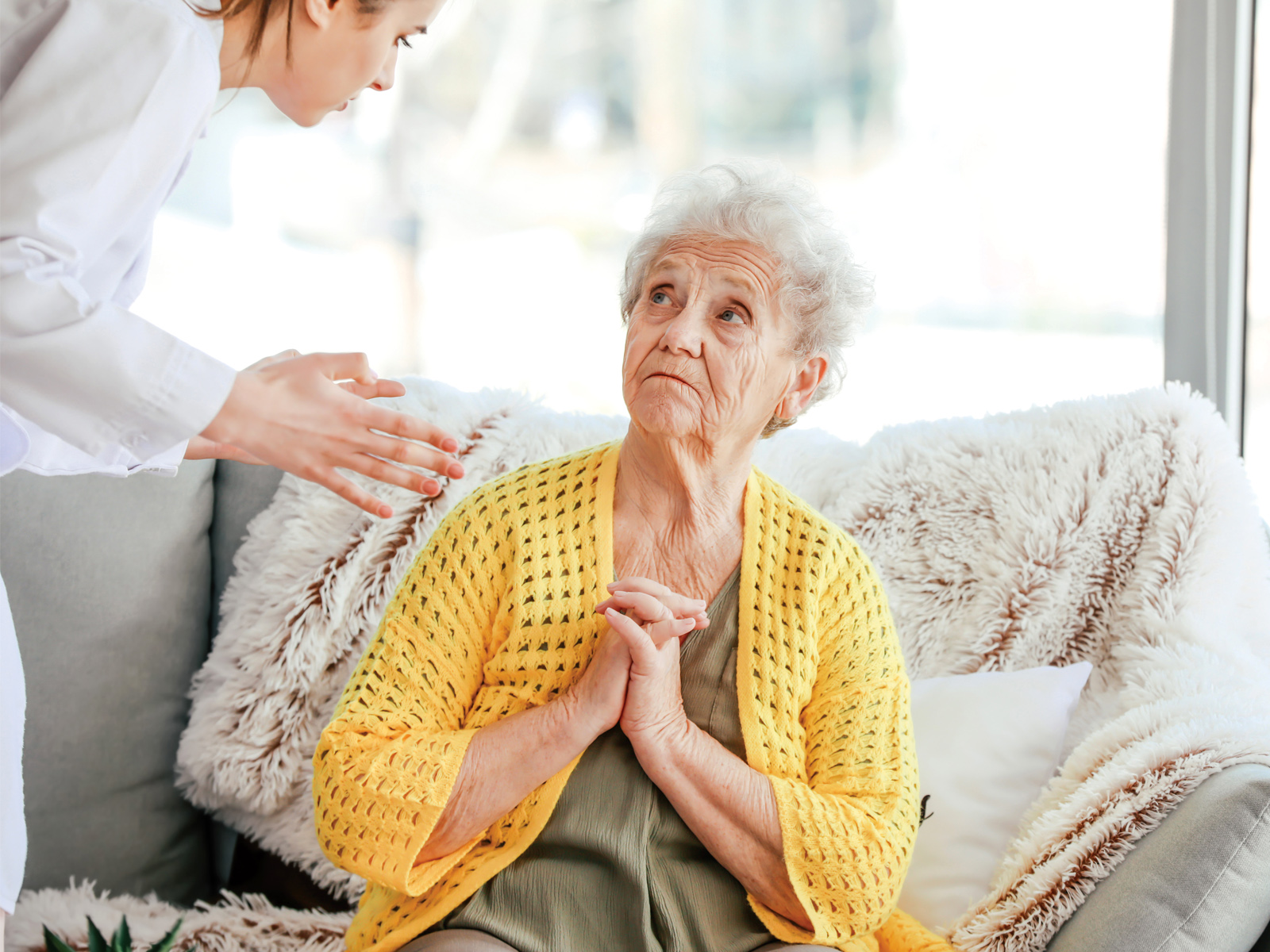One in ten Canadians over the age of 65 experience some form of abuse and neglect and that number is expected to rise as the number of older adults increases
According to the World Health Organization, domestic abuse, also called “domestic violence” or “intimate partner violence”, is explained as a pattern of behaviour in any relationship that is used to gain or maintain control over a close partner.
The violence or abuse can be physical, sexual, emotional, economic, or phycological actions or threats of actions that influence another person. It can occur within a range of relationships, including close relatives, caregivers, staff, administrators. It can even occur between older couples who are married, living together or dating.
Some seniors and adults living with disabilities face unique challenges and vulnerabilities due to their lack of mobility and social isolation.
As observers and family members, recognizing the signs of domestic violence can be challenging, as the abuse can be subtle and hidden from daily view. Common indicators of abuse may include (but aren’t exclusive to):
• Weight loss, dehydration, poor hygiene, rashes and pressure sores that spell neglect
• Unexplained injuries, bruises or talk of frequent accidents
• Non-attendance at regular activities without reason
• Emotional changes such as increased anxiety and depression
• Social isolation and withdrawal
• Missing funds or personal items, unusual gifts, or sudden arrangement changes
• Missing money or disappearing personal items
• Being unnecessarily sedated with drugs
Emotional abuse
People may use different terms for emotional abuse, such as psychological abuse or mental abuse. At times, emotionally-abusive behaviour may be connected to psychological terms that may describe an abuser’s mental state (e.g., “narcissistic abuse”).
Emotional abuse has occurred when a person uses words or actions to control, frighten, or isolate someone or take away their self-respect. It is also a very common element of gender-based violence and it can go hand in hand with physical forms of abuse and is often connected to power imbalances that put some people at higher risk. Below are some of the signs of an emotionally-abusive relationship:
Humiliation and derision
Healthy relationships involve both parties feeling safe, respected, and free to express their thoughts, pursue their interests, and change their appearance without fear of being embarrassed. Emotional abuse can include humiliation in order to dismiss and minimize feelings and worth. This could take the form of; name calling, publicly embarrassing a person (including online), belittling accomplishments and interests, insulting or trying to control your clothing, hairstyle, or any physical changes, and deliberately putting you in physically- or emotionally-uncomfortable positions (such as locking you out of your home or making a scene in a social situation).
Gaslighting and manipulation
In a healthy relationship, your feelings, thoughts, and perceptions of reality will be validated. An emotional abuser may try to erode your faith in your own perceptions and feelings in the following ways by saying it’s all your fault or dismissing your feelings as “crazy,” “dramatic,” “overreacting,” or “emotional”.
Isolation and control
Healthy relationships involve both parties supporting one another in their respective interests, relationships, and goals outside of the relationship. Emotional abusers will often work to make the relationship the most important thing in your life in order to isolate you from things that might threaten their control. This might include:
• Demanding to know your whereabouts and who you are with all the time
• Tracking phone or car or monitoring texts and emails
• Making unilateral decisions- especially financial
• Withholding affection as a form of punishment
• Insisting on being together all the time and isolating from family, friends, and/or coworkers
Erratic or chaotic behaviour
Emotional abuse may involve threats about safety. Abusers may attempt to guilt the other person into staying with them through feigned helplessness and blackmail. Often abusers will have mood swings or unexpected outbursts, deliberately pick fights and use control tactics like destroying or hiding belongings especially those which allow for mobility and independence, such car or house keys.
Are you in denial?
Sadly, many people do not report abuse because they are traumatized. They may be in denial, feel ashamed or feel hopelessly alone. Older adults can also worry about repercussions from their abuser such as additional abuse, forced institutionalization or withholding of basic needs and care.
Most often they are afraid. They don’t know who they can reach out too and the consequences for speaking about their abuse. And, many times, outsiders, family and friends don’t know how to report suspected abuse and worry about getting involved in an already messy situation.
Three things to do
You are not alone. Many individuals have faced similar situations and found the strength to overcome them. There is support available if you find yourself, or someone you know, experiencing domestic violence:
1) Connect with local organizations: contact local shelters, crisis centres, and helplines specializing in domestic violence support
2) Reach out to 211 Canada can be reached anywhere in Canada and has access to all of your local groups if you need help knowing where to look
3) Talk to someone you trust: share your concerns with friend, family member, or healthcare professional.














